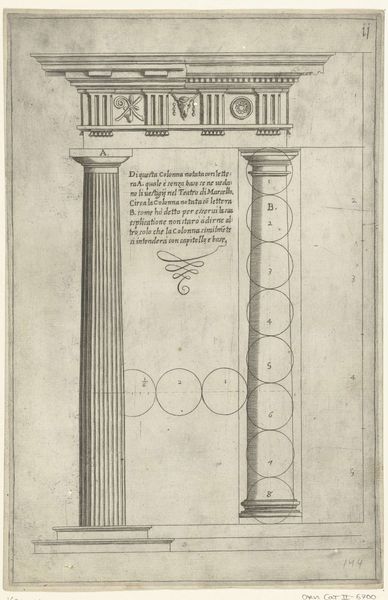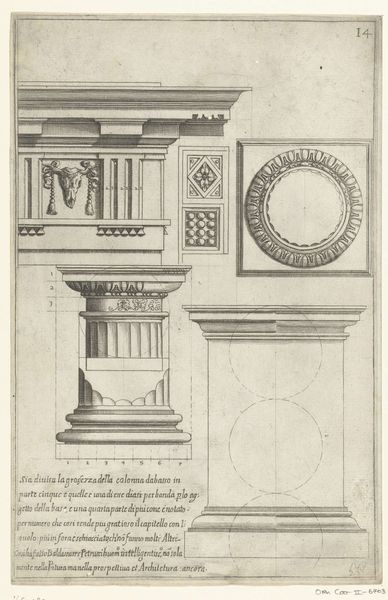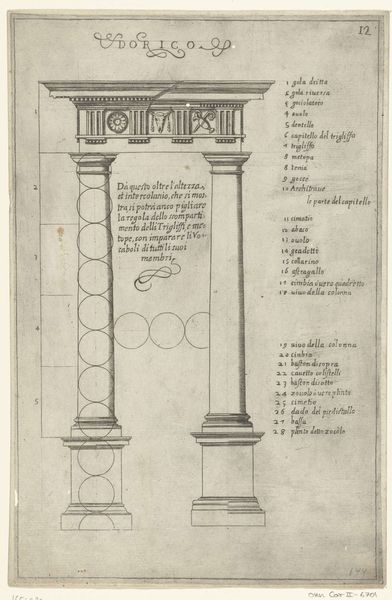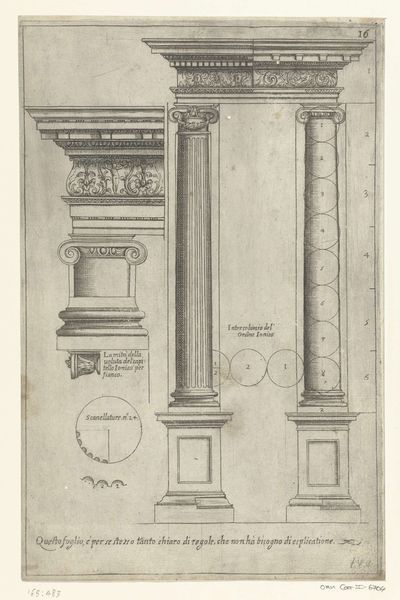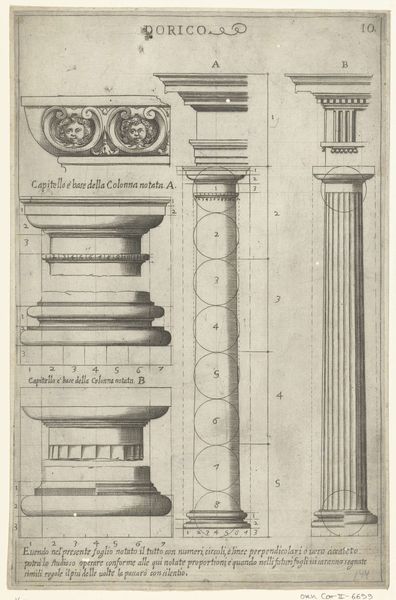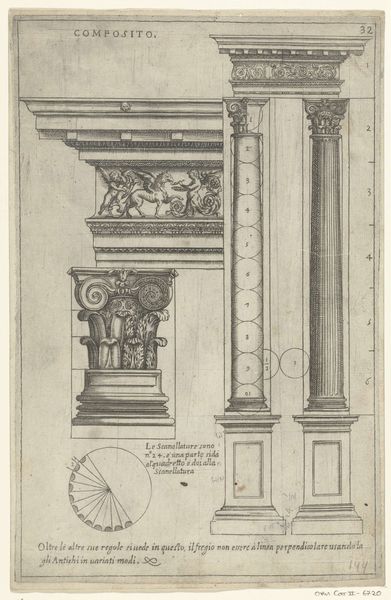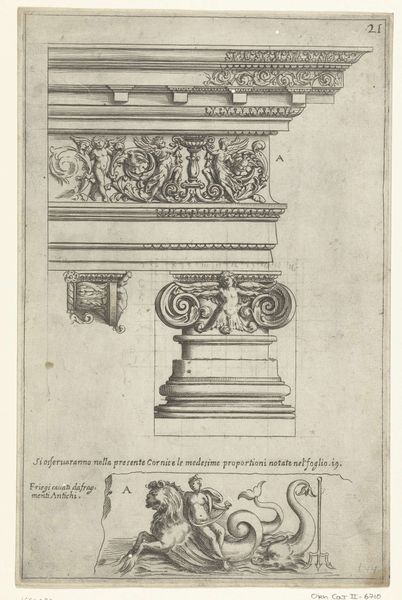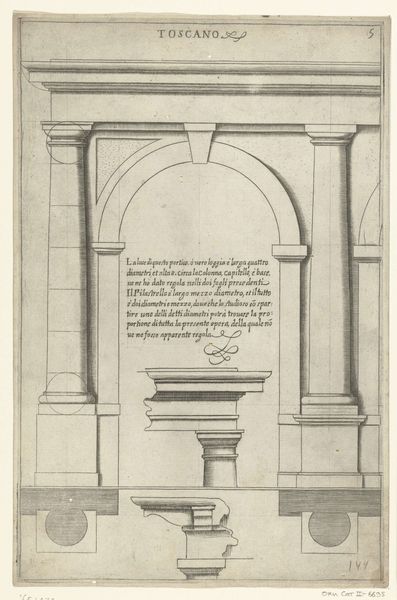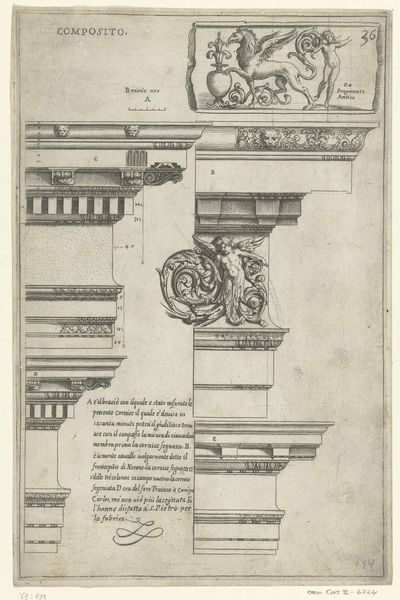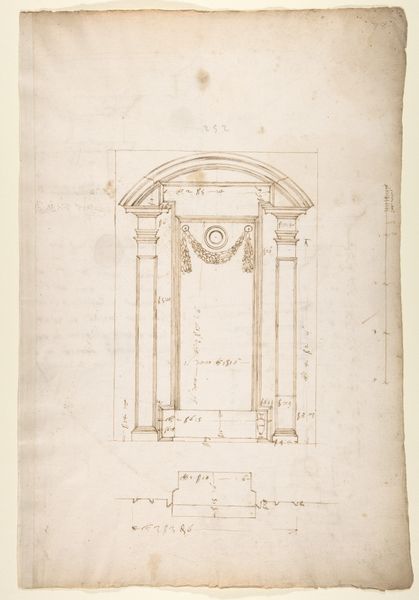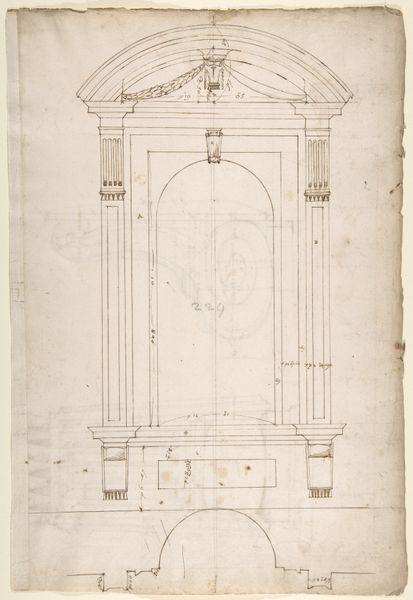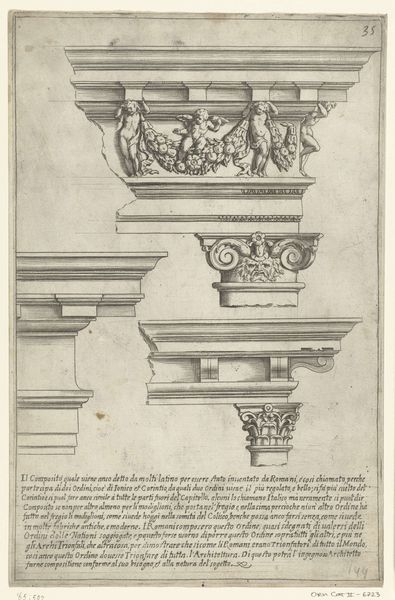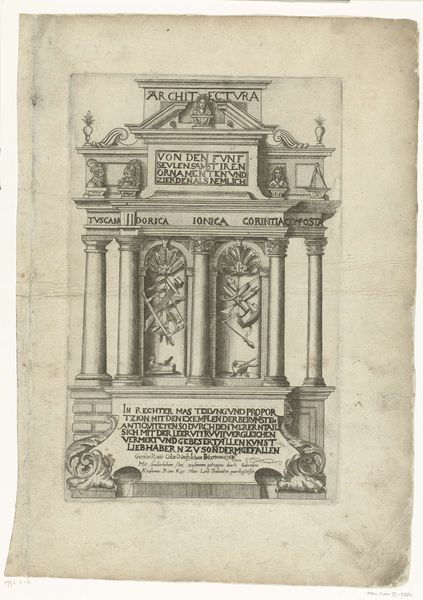
drawing, print, paper, engraving, architecture
#
drawing
# print
#
paper
#
form
#
11_renaissance
#
geometric
#
line
#
engraving
#
architecture
Dimensions: height 275 mm, width 177 mm
Copyright: Rijks Museum: Open Domain
Curator: Oh, this old thing! This is "Toscaanse zuil en hoofdgestel," a 1636 drawing. Probably intended more as a technical print, an architectural study, really. Editor: Right! It’s an architectural rendering on paper, of an... ancient column? It feels so precise and orderly. It’s a very geometric-looking print, made with lines and engravings. The name suggests it’s a Tuscan style. I can also read that name at the top. What is this exactly? What does it tell us about architecture from the Renaissance? Curator: More than first meets the eye! It’s all about proportion. Look how the artist uses geometry – the circles layered on the right-side rendering. See the notes scattered all around. Architectural ideals, classical orders… How do you think such a piece reflects the artistic thinking of the Renaissance? Editor: It makes me think about that era's fascination with bringing back ancient Greek and Roman knowledge. The artists back then were into mathematics and idealized forms, like trying to find the "perfect" measurements of things. It's about looking back for a "better" past. Curator: Precisely! These seemingly dry architectural prints whisper of humanity's desire to codify beauty, measure elegance. The Renaissance sought the harmony between humanism, art and science... which is maybe something to think about now, too. Do we really know where our digital world is going? Editor: Well, I’m definitely looking at columns differently now! Seeing the order behind the image has opened my eyes. Curator: Indeed! It always does once we scratch beneath the surface, doesn't it?
Comments
No comments
Be the first to comment and join the conversation on the ultimate creative platform.
